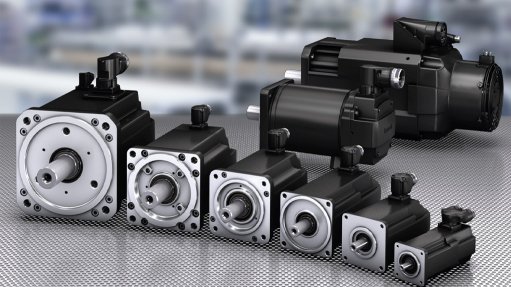
VERSATILITY IN APPLICATION The MS2N includes over 50 motor types in six motor sizes, five motor lengths and more than 20 fully configurable options
Automation technology solutions provider Tectra Automation’s new MS2N synchronous servo motor is the company’s latest innovative product offering to the electric drives and controls industry.
The MS2N servo motor range combines high dynamics with compact dimensions and energy efficiency, with more torque, higher speeds, a practical single-cable connection and extensive options for the highest servo mechanism requirements.
The MS2N features over 50 motor types in six motor sizes, five motor lengths, and more than 20 fully configurable options, covering maximum torque up to 360 Nm and maximum rotational speeds of up to 9 000 rpm. It is 30% smaller than its predecessor, has a low rotor inertia for maximum dynamics and high rotor inertia for optimal adaption motor masses.
The motor comes equipped with a quick-locking mechanism, which is simple, practical and lessens installation time. The MS2N product line shows intelligence that progresses all the way to the motor by storing the individual readings of every single motor, as well as the saturation and temperature data into the motor data memory.
The MS2N servo motor also comes fitted with a certified SIL3 encoder, allowing for maximum level of safety for all safety functions. This includes safe absolute end position, which replaces the hardware limit switch by software, 31 configurable safe cam areas, reducing commissioning owing to semi-automatic support and PC-free device replacement during servicing.
The motor has a maximum torque error range of 5%, which compares well with the standard torque error range of +5 and –35%.
Applications in which this product may be operated include force and pressure control in robotics and production machines and condition monitoring, such as detection of production faults or defective parts.